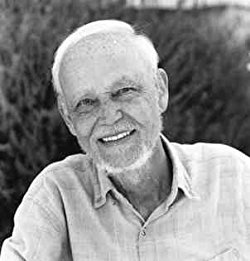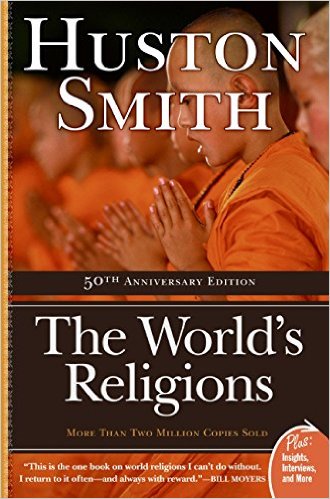The World’s Religions Summary
5 min read ⌚
 Our Great Wisdom Traditions
Our Great Wisdom Traditions
Do we need to close our eyes to the prospect of peace and understanding? How to achieve it, when we know very little about each other?
Huston puts an end to this ignorance, by introducing the world to the idea of diversity.
We summarize the central teachings and express our point of view in this regard.
Who Should Read “The World’s Religions”? And Why?
Who speaks on our behalf? – Well, to overcome this half-knowledge one must be ready to examine its agenda and beliefs. You must relieve yourself from judgmental notions, and thrive, as a sensitive person.
“The World’s Religions” as the name implies, comes suitable for all people because it speaks to everyone. It promotes a new concept, in which one can exploit the other.
About Huston Smith
 Huston Smith was a religious scholar who died at the age of 97 in the U.S. Although many define his work as comparative religion; he never acknowledged such orientation.
Huston Smith was a religious scholar who died at the age of 97 in the U.S. Although many define his work as comparative religion; he never acknowledged such orientation.
He wrote many books, on various religious topics and stretched the boundaries of human knowledge.
“The World’s Religions PDF Summary”
At first glance, one may assume that this book, is merely focusing on the comparison between all major monotheistic religions.
Nonetheless, The World’s Religions, as a masterpiece, is not the judge nor the jury; it simply emphasizes some key moral aspects that are linked to some theological principles.
In other words, Huston Smith comes out with an unbiased review of what these religions offer, and how they contribute to the global religious literacy. From today’s perspective, it’s contrary to reason to express intolerance and shallowness about cultural diversity.
In truth, Dr. Smith wants to bring all these religious backgrounds and denominations on a new level of mutual understanding.
He strives to destroy stereotypes and prejudices, to the point where all these differences will no longer represent an obstacle, nor an issue to plunge into discussions.
So, which religions are we talking about?
-
- Christianity
-
- Islam
-
- Buddhism
-
- Taoism
-
- Hinduism
-
- Confucianism
- Judaism
As you can see, the focal point of cultural intelligence is represented through the seven major religions. Each religion has its own chapter, in which the reader can expand its horizons about a certain group.
Do you abide by some principles, what is your core belief?
The author tries to cover as much as possible, in order to help you to broaden your viewpoints, and thus become a more open person. Moreover, Smith analyzes larger sects within each religion, and how they differ from the central teachings.
The book has received wide-spread positive critical acclaim, for its orientation towards the reader – meaning that the book is not filled with complex terminology. Written in an easily digestible manner, it makes it easier for all potential readers to scan through its takeaways.
Heaven and earth are my inner and outer coffins. The sun, moon, and stars are my drapery, and the whole creation my funeral procession. What more do I want?
As it turns out, the second chapter on Hinduism is getting extra attention due to various sub-teachings in this religion.
In addition, it’s fair to say that India has always been the center of spiritual wisdom, and because of the religious diversity, it deserves special analysis.
Smith dives deep into the unknown and tries to absorb its mysteries, but because of his western agenda, it’s pretty challenging to interpret the scripts as an Indian.
In his discoveries, he managed to cross the threshold of Buddhism and Hinduism successfully and made a bit smaller strides towards other Asian-based religions.
After the examination on Hinduism, Smith embarks on another adventure, now about Buddhism. Siddhartha Gautama – The Buddha, had a pretty unusual life-flow, in which he gave up on worldly pleasures to chase higher meaning.
Same as the other founders, the Buddha didn’t want to create a religious movement, that was done after his death.
Next up, Smith introduces Confucianism and Taoism and links them to the cultural background which is co-dependent of the original teachings. Unlike other religions, where you can find believers from all over the world; these far-eastern disciplines are more geographically-bound.
Historical figures lose their center when they become anxious over the outcome of their actions.
Islam, Judaism, and Christianity all derive from the same source, and the original message of the movement slightly differs from one another. In these chapters, the author fixates attention on the homogenous aspect, rather than on pointing out the contrast of the group.
According to many, the most mind-blowing chapter is the last one “Primal Religions.” In this section of the book, you’ll be introduced to the oral tradition, which is older in time, than any other religious background or culture.
Now, Smith can give us a clue about these movements, whose members in the past were persecuted and punished.
It’s fair to say that Smith dropped a research bomb, and examined the core of each religious teachings. We come to a conclusion that every organized religion has its roots embedded into an oral tradition.
From what we acquired through this book, it can be said that “The World’s Religions” makes an effort to brings each group closer to the other by accepting diversity and embracing each other’s beliefs.
Key Lessons from “The World’s Religions”
1. Be impartial and tolerant
2. Don’t be a sinking ship
3. Become a listener
Be impartial and tolerant
Do we really need to say this?
Sadly, we do, because if there’s no scarcity of something – that would be our judgmental nature.
We are saddened by the thought that we failed to find that little place within us, which embraces everyone and everything.
Don’t be a sinking ship
Before you draw any conclusions, it’s best if you educate yourself first. If you are at your wit’s ends, you might need a change of pace and routine.
Stick to broadness, elevate yourself from the restrictions you imposed on yourself, and explore the world to its fullness.
Become a listener
People that talk too much have hardly ever anything valuable to share.
If you listen, perhaps you’ll learn something, and this simple trick will prevent you from judging the book by its cover.
Like this summary? We’d Like to invite you to download our free 12 min app, for more amazing summaries and audiobooks.
“The World’s Religions Quotes”
Among the languages of American Indians, there is no word for ‘art,’ because for Indians everything is art. Share on X If it is possible to be homesick for the world, even places one has never been and knows one will never see, this book is the child of such homesickness. Share on X Science makes major contributions to minor needs; Justice Holmes was fond of saying, adding that religion, however small its successes, is at least at work on the things that matter most. Share on X To try to extinguish the drive for riches with money is like trying to quench a fire by pouring butter over it. Share on X To find meaning in the mystery of existence is life’s final and fascinating challenge. Share on XOur Critical Review
If you are an open-minded person who’s prepared to explore the depths of various cultures, then this book would be like a gift from heaven to you.
Dive into its mysteries, and don’t be afraid to question your ideas!
Emir is the Head of Marketing at 12min. In his spare time, he loves to meditate and play soccer.


 Our Great Wisdom Traditions
Our Great Wisdom Traditions




